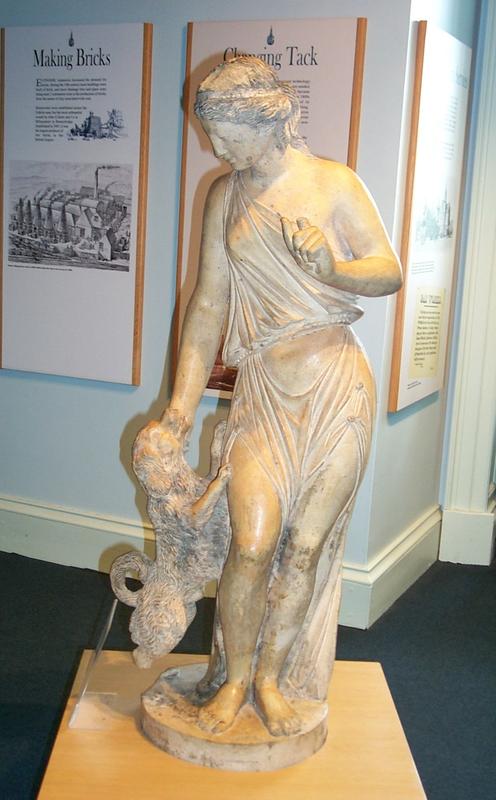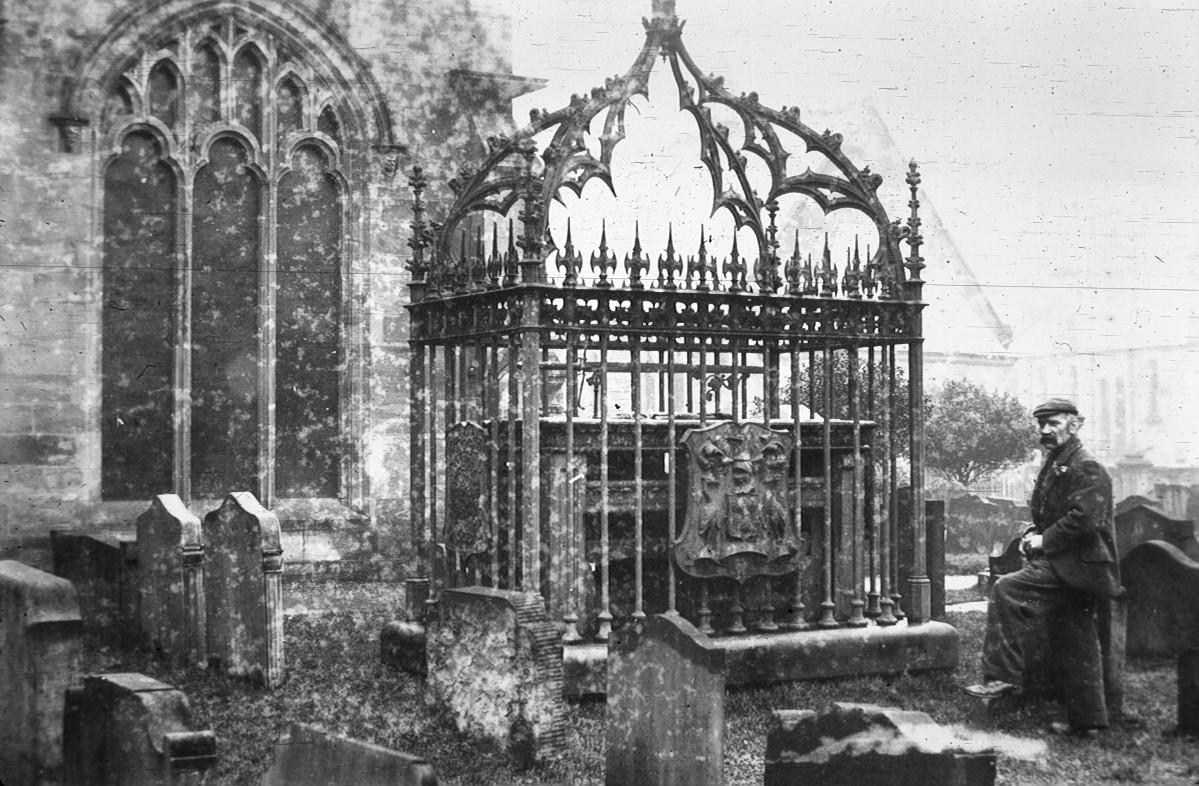This statue of Fidelity, held at Callendar house, is part of the history of Grangemouth’s Drill Hall.
Fidelity
The Fidelity statue was created by the Grangemouth Coal and Fireclay Company, who were founded in the 1830s and who, by the mid nineteenth century, began making fireclay bricks and ornamental terracotta pottery. The base of the statue is stamped with “G.H. Rowland” who is presumed as the sculptor. The statue was previously situated on a pediment of the Drill Hall on Talbot Street, Grangemouth, however it is now within Callendar House.


The Drill Hall
In 1887, as part of Queen Victoria’s Golden Jubilee celebrations, the Grangemouth projects were announced which included “establishing a Free Public Library, a bazaar to clear off the debt on the Young Men’s Institute; alterations and improvements on West Free Church; a club and reading-room for the Liberals of the Port; swimming baths for everybody; a “local habitation” for the Scottish Coast Mission and the construction of a Drill Hall for Volunteers.” In 1888, a site on Talbot Street in Grangemouth had been acquired for the construction of the Drill Hall and George Deas Page, originally from Glasgow, who had set up an architectural and civil engineering business in Falkirk, was appointed as the architect.
Fidelity’s Dog
In April 1889 the New Drill Hall for No. 12 Battery, 1st Fife Artillery Volunteers was opened. Constructed from stone and spanning two storeys, the principal elevation created a grand entrance is a neo-classical style which was described at the time as “an elegant frontage after the Swiss style of architecture, with a mixture of classic Greek.” On the front elevation were two large ornamental vases and above the arched doorway, there was a pediment with the statue, which were all supplied by the Grangemouth Coal and Fireclay Company. The statue depicts Fidelity with her dog which symbolises faithfulness and duty which is apt for the building’s use as a Drill Hall. While Fidelity is often depicted in art holding a golden seal and a key, the use of the dog pays tribute to classical mythology. Stories such as the Odyssey, where Odysseus’s dog Argo is the only one to recognise him upon his return to Ithaca, or that of Roman Titus Labienus whose dog refused to leave his side during death, are examples of a dog becoming a symbol of undying loyalty. The statue has previously been interpreted as the Roman goddess Diana, who is regularly depicted with a dog, by Robert Porteus in his work Grangemouth’s Modern History 1768-1968.
World War One and Beyond
At the start of the Great War in 1914 the Drill Hall became the station for the 3 Gordon Brigade Company, Highland Division Transport and Supply Column Army Service Corps. The hall stayed in use afterwards but by 1950, the Stirlingshire T.A. and A.F. Association were looking to sell the Drill Hall on Talbot Street, and move to another site which had more modern facilities of the day. The Drill Hall became the headquarters of the Docker’s Battalion and was eventually demolished in 1994 (Barclay 2013).
During a gale in 1968, the statue of fidelity fell from its pediment. She then lay at the back of the Municipal Buildings until the early 1990s, underwent conservation work in Edinburgh, and was rehoused in Callendar House (Bailey 2020). Both the vase finials which were created by the Grangemouth Coal and Fireclay Company also survived and are in the care of the Falkirk museum.
By Olivia Watt, Great Place volunteer 2020. Hidden Heritage: Statues and Monuments project.

